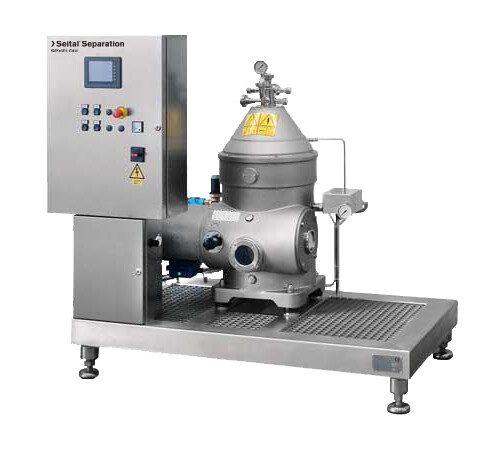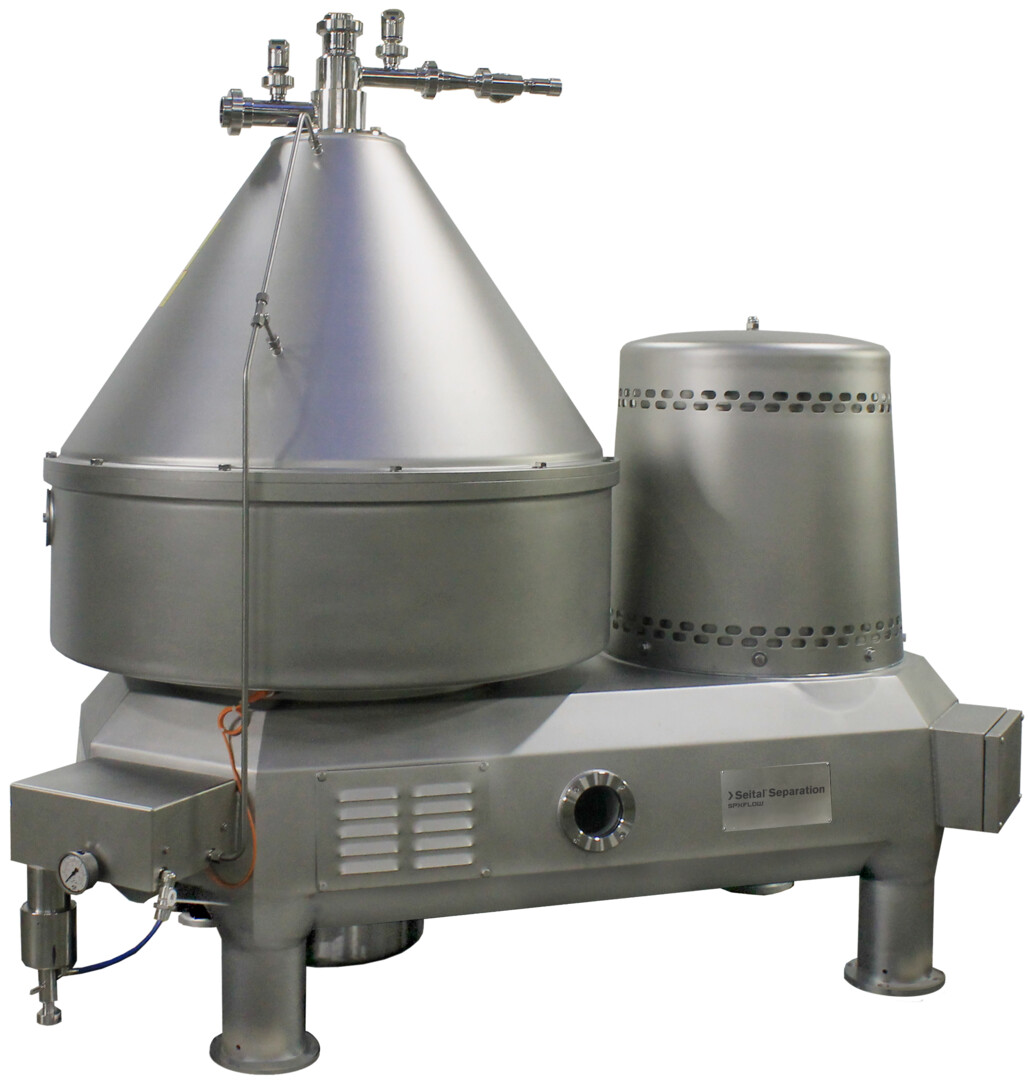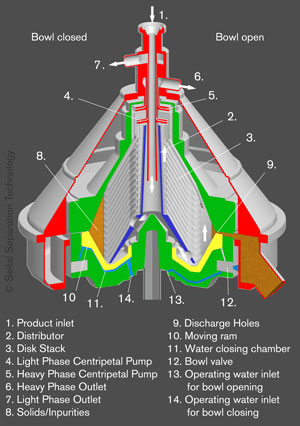FEATURES
SPX FLOW offers a wide range of self-cleaning separators for liquid/liquid/solid separation. This type of separator allows for the recovery of fine particles (0,5-500 µm), the efficient separation of a mixture into its two phases and the contemporary clarification of both by means of a very high peripheral centrifugal field (G-force).





